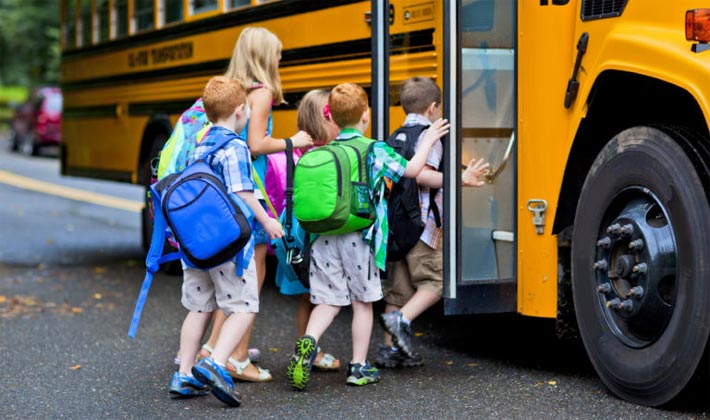
As a parent of a ten-year-old stepson, the most recent topic of discussion in our house has surrounded the idea of him wanting a certain pair of shoes for back to school. These are shoes that I, as a Pedorthist, know won’t do his feet much good when it comes to providing him with proper support.
But as many of you can relate, a child this age typically doesn’t care about the function of the shoe, but rather what’s in with the latest trends. I struggle with his request for several reasons: First, he already has good sneakers for back to school. Second, the ones he wants are way overpriced for the quality of the shoe. Third, he has had foot issues in the past, and even though he wears proper supportive orthotics, I know these shoes won’t aid in supporting his feet. Try explaining that to a ten-year-old!
Through much thought and several discussions with my husband, we came to the conclusion that we would allow him to get the shoes, with the stipulation that they are to be worn in moderation. Note that “moderation” is the key word here. They are only to be worn to and from school, with the proper sneakers to be worn all day during school.
Why is it so Important for Children to Wear Proper Footwear?
Growing children often experience hypermobility in their joints due to the developmental stages of their growing bones. Often the bones aren’t fully fused until late in their teens. It is crucial that we choose the right footwear to support the development of good foot structure throughout these important years.
Muscles and other soft tissue structures typically are not as strong at this age, so we want to avoid any unwanted strain or movement to these structures as well. This will help prevent the onset of injuries and unwanted mechanical foot and lower limb issues such as flat feet, ankle pain, shin pain, knee, hip and low back pain.
One thing we have to consider is that children spend approximately eight hours a day in their school shoes. That’s a significant amount of time each week. The vast majority of their activity throughout the day is during recess, lunch and physical education class.
Choosing the wrong footwear can be detrimental to their daily well being. Your feet support your entire body. Therefore, choosing the wrong shoes can contribute to foot pain and/or lower limb pain. At the end of the day, this will result in a less happy child.
Choosing the Right Shoe
I know many parents struggle with the idea of what shoes to buy or even the concept surrounding the importance of proper footwear. Often through advertisements and endorsements, you think you are getting a good shoe, when in actual fact you are not. How can this be? You’ve spent an arm and a leg (maybe even your firstborn child!) on this shoe and it’s not the proper shoe? Yes, you read that correctly, many times companies sell you this idea so that you buy their product.
Below are some features you should look for when outfitting your children for back-to-school footwear:
- Sneakers, typically nothing too heavy, are always my preference as they offer the most structure and support for the feet.
- Testing for proper bend and flexion points will ensure the shoe bends properly with the natural mechanics of the foot. You can check for this by making sure the shoes bend at the forefoot (metatarsals) and not throughout the arch, have good torsional stability when you twist the bottom of the shoe, and have a proper firm backing to the shoe (heel counter). If the shoe bends too much, it is no good.
- While cushion is nice, it is also important to recognize when an outsole is made of materials which are too soft and not solid in structure. For example, EVA rubber (the rubber typically found in most sneakers) outsoles are ideal, but soft EVA or EVA with holes in it will break down more quickly and you will find yourself having to replace them more frequently.
- Lace the shoe closure for proper fit and ankle support. Remind your children to always lace and unlace their footwear!
- Avoid flat shoes. Ideally, a 6mm incline from the front to the back of the shoe will take strain of the posterior heels, legs and low back.
Tips for Proper Fit and What to Avoid
- Size both feet. Remove the insoles from the shoes and have your child stand on the insole. There should be approximately a quarter inch to a finger space in front of the longest toe (not necessarily always the big toe). This will also likely give them a little bit of room for growth and hopefully get them through the school year.
- Fitting the shoes too big doesn’t support the foot and allows for more play in the bones, joints and soft tissue structures surrounding the foot.
- Ensure adequate width and depth throughout the shoe. You don’t want their feet feeling cramped up.
- Breathable meshes and leathers are often more ideal. Avoid synthetics as much as possible as they may irritate the toes and cause odour issues.
- Avoid shoes with little padding and thick seams inside as this will likely irritate the feet.
Recognizing Issues with your Child’s Feet/Footwear
If you notice your child is wearing through a pair of shoes rather quickly or see signs of uneven wear, you should bring them to your nearest Canadian Certified Pedorthist and have a proper assessment done to determine if treatment is needed. This may include a more specific type of footwear or off the shelf or custom orthotics.
By Jodi Basha, BPE, Dip. Ped., C. Ped (C)
